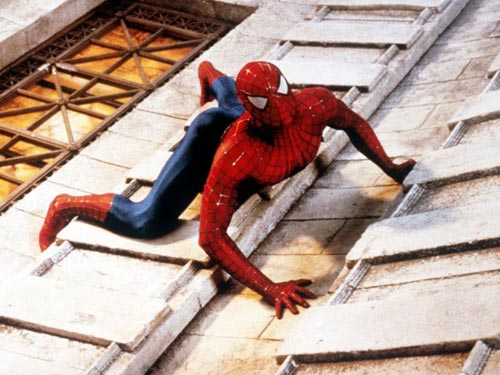Equipment to help ordinary people into spiders
Cornell University, New York, has just invented a device that is about the size of a phone, taking advantage of the surface tension of water to help people walk on walls like spiders.
The device was born as a result of research based on the importance of indigenous beetles in Florida, USA. This bug can adhere tightly to the leaves with gravity pulling down by 100 times their body weight, but can immediately jump away.
The team announced the introduction of this new device in the National Academy of Sciences' newspaper. The device consists of a flat plate with round holes with micron sizes (one millionth of a meter). The flat plate bottom forms like a liquid tank, while the middle layer has a honeycomb shape. In addition, an electromagnetic field created by a 9V battery will help pump water through the device, forming droplets and squeezing them into the top layer. The surface tension of the water droplets makes the device grip the other surfaces like two wet glass plates sticking together.
"In everyday experiments, this force is often very weak. But if you create enough of these forces and make them, like the beetles do, you will have a very strong bonding force , " the chief the research team said.

One of the team's first products was made with 1,000 300-micron-sized holes, which could hold about 30 grams, with more than 70 paper clips."We realized that the more holes that were created on the device, the stronger the adhesive force. And according to calculations, if over 1 square inch with a million holes of 1 micron size, it could hold about 7 kg, " said the team leader.
In order to avoid adhesion, the team reversed the direction of the electromagnetic field, which would be repelled through small holes, breaking the micro-bonding bridges created between the device and the surface. .
One of the biggest challenges in designing this device is keeping water droplets from forming into a group. To solve this problem, the team designed the pump to keep the flow of water when the magnetic field is reversed.
Currently, the group continues to study the product samples of the future with larger layers, with the complete pump set to make the adhesive force stronger. They want to cover the droplets with thin, thin patches that are enough to control with a pump but thick enough to eliminate the dampness.
- This is the color that people fear spiders should avoid wearing
- Spiders can also spread silk in the universe
- Spiders re-solidify and birds
- Mechanism to catch spooky prey of spiders
- Science has proven: Spider is a friend, not an enemy!
- Many new and rare spiders are found in Australia and India
- Science determines the time when spiders are most likely to occur in the home
- What if we swallow a spider?
- Spotted spiders emitting a
- Reveal how to transform ordinary people into superman
- Why do spiders spread silk?
- Surprised with fish-eating spiders
 Daily use inventions come from universities
Daily use inventions come from universities Special weight loss device helps prevent appetite
Special weight loss device helps prevent appetite 8 inventors were killed by their own inventions
8 inventors were killed by their own inventions Iran invented a motor car powered by water
Iran invented a motor car powered by water